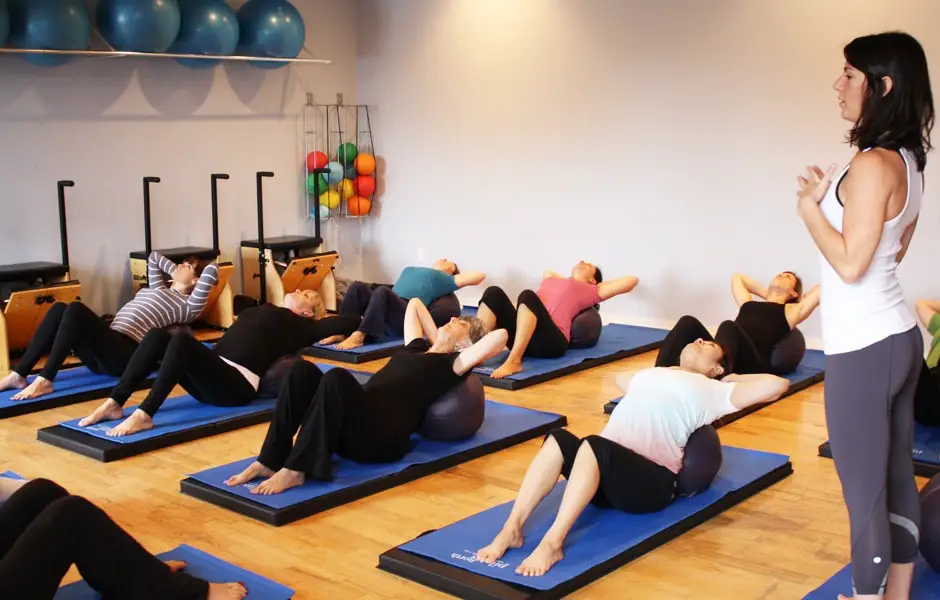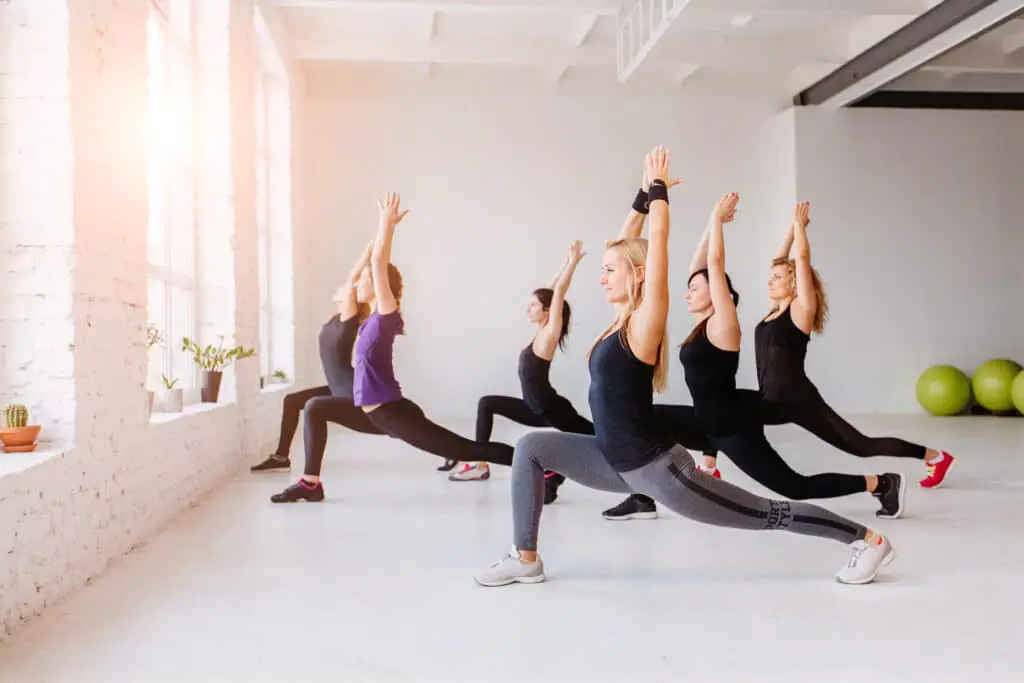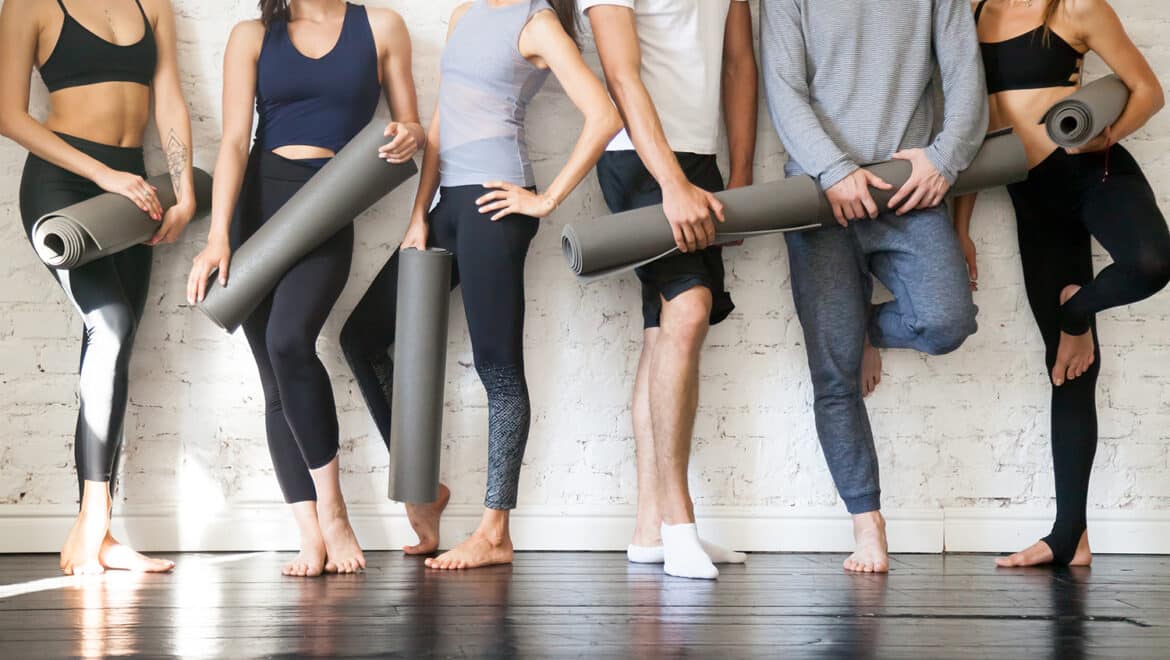Introduction
What To Wear For Pilates: When it comes to Pilates, the right attire can make a significant difference in your comfort, performance, and overall experience. Pilates is a mind-body exercise method that focuses on core strength, flexibility, and controlled movements. Whether you’re a beginner or a seasoned practitioner, choosing the appropriate clothing for your Pilates session is essential. In this guide, we’ll explore the ideal clothing choices to help you move freely, maintain proper alignment, and get the most out of your Pilates practice while feeling confident and at ease. Discover how to select the perfect Pilates attire that supports your fitness journey.
Dress according to the room temperature or climate. In warmer conditions, lightweight, breathable fabrics are essential. In cooler environments, layer up to stay warm during warm-up and cool down. While color is a personal preference, lighter colors may be more practical as they can help you stay cool and are less likely to show sweat. If you have long hair, consider tying it up to keep it out of your face during exercises that involve lying down or bending forward.
Remember that Pilates is a versatile workout that can be performed on a mat or specialized equipment like the reformer. Your clothing choices may vary slightly depending on the specific type of Pilates you’re doing. Ultimately, the goal is to choose clothing that allows you to move comfortably and confidently while supporting your fitness goals.

Is it OK to wear shorts to Pilates?
During Pilates, your legs are often spread apart or above your head. Form-fitting leggings are ideal, but you can wear shorts to class–just make sure they’re fitted/lined to avoid flashing your instructor! If you don’t feel comfortable in leggings, wear compression shorts underneath your normal gym shorts.
The Comfort Factor
Comfort is a crucial aspect of choosing workout attire, and it varies from person to person. For some, wearing shorts during a Pilates session can provide a sense of freedom and flexibility. Shorts allow your legs to move freely, and they may be especially comfortable in warm weather or if you tend to overheat easily during exercise. However, it’s important to ensure that the shorts you choose are made from breathable and moisture-wicking fabric to keep you comfortable throughout your workout.
Functionality in Pilates
Pilates is a low-impact exercise method that focuses on core strength, flexibility, and posture. Unlike high-intensity workouts like running or weightlifting, Pilates exercises involve controlled, precise movements that require stability and balance. In this context, wearing shorts can be functional because they allow you to see and feel the alignment of your legs and pelvis more easily, which is essential for proper form and technique.
Additionally, some Pilates exercises involve lying on your back or side, where longer pants might restrict your movement. Shorts can be advantageous in these situations as they minimize interference with your exercises.
Consider Studio Policies
Before deciding to wear shorts to a Pilates class, it’s essential to check the specific policies of the studio or gym you attend. Some facilities may have dress codes or guidelines regarding appropriate workout attire. While most Pilates studios are relatively relaxed about clothing choices, it’s always best to confirm their expectations to ensure you don’t inadvertently violate any rules.
Do you do Pilates with or without shoes?
Skip shoes: Pilates is typically done barefoot, so you will take your shoes off at the beginning of the session. If you want to wear socks you can, but opt for socks with a grip bottom so you don’t slip. Avoid baggy clothes: Choose workout clothing that’s stretchy but not baggy.
Barefoot Pilates
Better Connection: Pilates focuses on precision and control of movement, and going barefoot allows you to have a better connection with the floor. This enhanced sensory feedback helps improve your body awareness and alignment.
Foot Strengthening: Exercising without shoes can help strengthen the muscles in your feet, which can have a positive impact on your balance and stability, both of which are fundamental in Pilates.
Improved Flexibility: Going barefoot can improve the flexibility of your toes and ankles, making it easier to execute various Pilates movements.
Hygiene: Studios often prefer clients to go barefoot for hygiene reasons, as it helps keep the equipment and floors cleaner.
Pilates with Shoes
Foot Conditions: If you have foot-related conditions or injuries, wearing shoes with proper arch support can provide additional comfort and stability during your Pilates session.
Cold Floors: In colder climates or studios with chilly floors, some individuals may prefer wearing grip socks or soft-soled shoes to keep their feet warm.
Reformer Pilates: When using Pilates reformer machines, some individuals may choose to wear grip socks or specialized Pilates shoes with a non-slip sole. These shoes are designed to provide grip and stability on the equipment.
What should I wear for Pilates at home?
Conforming stretch leggings or bottoms.
For the same reasons to wear a fitted top, you’ll also need some leggings, bike shorts, or other bottoms that feel like a second skin with ample stretch. Ones with flat seams are preferable to avoid any irritation or unnecessary friction.
Layering for Temperature Control
The temperature of your workout space can vary, so consider layering your clothing. You can start with a lightweight, moisture-wicking base layer and add a long-sleeve shirt or hoodie that you can easily remove if you get too warm. This flexibility allows you to adapt to changing conditions during your at-home Pilates sessions.
Footwear Choices
Most Pilates exercises are performed barefoot. Going shoeless allows you to have a better connection with the floor and enhances your balance and stability. However, if you have foot-related issues or are working out on a hard or cold surface, you can opt for non-slip grip socks, which provide both grip and a layer of insulation.
Avoid Loose or Baggy Clothing
Avoid wearing loose or baggy clothing, as it can get in the way and make it challenging to monitor your form and alignment. Loose clothing may also restrict your movements, making it less effective and comfortable. Instead, choose clothing that fits well and stays in place.
Consider Props and Accessories
Depending on your specific Pilates routine, you might incorporate props such as resistance bands or yoga blocks. Ensure that your attire allows you to use these props comfortably and without hindrance.
Can you do Pilates without a bra?
Most women will want a bra designed for sports or for yoga. Pilates is not a high-impact sport, but a sports bra ensures that discomfort is not experienced during rapid shifts of position. A low-impact sports bra will definitely suffice. A specific yoga bra can also work.
Consider the Impact Level
The suitability of practicing Pilates without a bra largely depends on the intensity and impact level of your Pilates routine. Pilates is generally a low-impact exercise, and many of its exercises are done lying down or in positions that don’t involve high-impact movements or jumping. For individuals with smaller busts or those who feel comfortable without additional support, practicing Pilates without a bra may be perfectly acceptable.
Personal Comfort Matters
Personal comfort is a significant factor when deciding whether to wear a bra during Pilates. Some women may feel more comfortable and relaxed during their practice without the constraints of a bra, particularly if they are wearing well-fitted and supportive workout clothing. On the other hand, those with larger busts may prefer to wear a sports bra or a supportive bralette to minimize discomfort and ensure they feel secure during their workout.
Consider Supportive Workout Wear
If you decide not to wear a traditional bra during your Pilates session, consider investing in supportive workout attire that provides the necessary coverage and comfort. Many athletic wear brands offer sports bras, tank tops, or workout shirts with built-in support or padding. These options can offer some support without the need for a traditional bra.
Focus on Movement and Technique
Regardless of your choice, it’s crucial to prioritize proper movement and technique during your Pilates practice. Your clothing should allow you to move freely and comfortably without causing any restrictions or discomfort. Ill-fitting bras or clothing can distract from your workout and hinder your ability to maintain correct form, which is essential in Pilates.
Can you get in shape with just Pilates?
Pilates is a popular low-impact exercise. It’s effective for toning up, building lean muscle, and improving posture. Practicing Pilates can be beneficial for your health and help you maintain a healthy weight. Yet, Pilates may not be as effective for weight loss as other cardio exercises, such as running or swimming.
Can You Get in Shape with Just Pilates
Cardiovascular Fitness: Pilates is not primarily a cardiovascular exercise. If your fitness goals include improving cardiovascular endurance or losing a significant amount of weight, you may need to complement your Pilates routine with aerobic activities like running, cycling, or swimming.
Strength and Muscle Building: While Pilates can help build lean muscle and improve muscular endurance, it may not provide the same level of muscle hypertrophy (increased muscle size) as traditional strength training methods such as weightlifting.
Weight Loss: Pilates can contribute to weight loss when combined with a balanced diet, but it may not be as effective as high-intensity workouts for burning calories.
Functional Fitness: Pilates excels at improving functional fitness, enhancing posture, and reducing the risk of injury. If your goal is to move more comfortably in daily life, Pilates can be an excellent choice.
Mind-Body Connection: Pilates offers unique benefits in terms of mental focus, stress reduction, and mind-body connection. These aspects can complement a holistic approach to fitness and well-being.
Can Pilates alone get you in shape?
Every movement works strength, flexibility, and mental control over your body,” she says. So, your answer is a resounding yes, you can absolutely get in shape with Pilates. (BTW: Just because you’re sweating more doesn’t mean you burned more calories.)
Can Pilates Alone Get You in Shape
Functional Fitness: Pilates excels at improving functional fitness, enhancing core strength, and reducing the risk of injury. It can contribute significantly to overall body conditioning and well-being.
Posture and Flexibility: If your primary fitness goals involve improving posture, increasing flexibility, and enhancing body awareness, Pilates can be highly effective on its own.
Supplemental Fitness: Pilates can serve as a valuable component of a broader fitness plan. It can complement other exercise modalities by providing core strength, flexibility, and balance.
Weight Management: While Pilates can contribute to weight loss when combined with a balanced diet, it may not be as effective for burning calories as high-intensity cardiovascular workouts. If weight loss is a primary goal, a combination of Pilates and aerobic exercise may be more suitable.
Muscle Building: Pilates can help build lean muscle and improve muscular endurance. However, if you seek substantial muscle hypertrophy (increased muscle size), traditional strength training methods like weightlifting may be necessary.
Can you wear leggings to Pilates?
Form fitting clothes such as leggings and stretchy tops are popular in Pilates for a good reason – unlike loose clothes they aren’t so likely to end up accidentally showing a midriff or thigh.
The Benefits of Wearing Leggings
Freedom of Movement: Leggings are typically made from stretchy and form-fitting materials like spandex or Lycra, which allow for unrestricted movement. This is especially important in Pilates, where precise movements are essential.
Body Awareness: Leggings provide a close fit to your body, allowing you to see and feel the alignment of your legs and pelvis. This enhanced body awareness can be beneficial for maintaining proper form during Pilates exercises.
Comfort: Leggings are known for their comfort, thanks to their flexibility and moisture-wicking properties. They can help you stay dry and comfortable throughout your Pilates session.
Versatility: Leggings are versatile and can be paired with various tops, making it easy to create different workout outfits. This flexibility can be especially useful if you have multiple Pilates classes or exercises in your routine.
Style: Leggings come in a wide range of colors, patterns, and styles, allowing you to express your personal style while working out.
Can an unfit person do Pilates?
If injured people can rehabilitate and benefit from this style of training, there is absolutely no reason why the average person can’t benefit, even if you’re currently unfit or have been inactive for a long period of time. You can definitely start doing Pilates even if you’ve done very little exercise previously.
Pilates Is Accessible to Beginners: Pilates is known for its accessibility, making it an excellent choice for those who are new to exercise or returning after a long break. Many Pilates studios and classes offer beginner-level sessions specifically designed to introduce newcomers to the fundamentals.
Low-Impact Nature: Pilates is inherently a low-impact exercise, meaning it puts minimal stress on the joints. This makes it suitable for individuals with various fitness levels and those who may have joint concerns or injuries.
Progressive Approach: Pilates exercises can be adapted to meet individual needs and fitness levels. As you progress, your instructor can introduce more challenging variations to help you continue improving.
Core Strength and Posture: Pilates focuses on building core strength, improving posture, and enhancing overall body awareness. These foundational elements are beneficial for everyone, regardless of their current fitness level.
Individualized Instruction: Enrolling in a Pilates class or working with a certified instructor allows you to receive personalized guidance and modifications tailored to your fitness level and any specific limitations or goals you may have.
Consistency Is Key: Like any exercise program, consistency is crucial. Starting with a beginner’s mindset and gradually increasing the intensity and complexity of your Pilates practice will yield the best results over time.

Conclusion
What you wear for Pilates can significantly impact your workout experience. The right attire should prioritize comfort, flexibility, and functionality. Choosing well-fitted, breathable, and moisture-wicking fabrics will help you move freely and stay comfortable throughout your session. Avoid overly tight or restrictive clothing, and opt for a supportive sports bra for added comfort. When it comes to footwear, grip socks or going barefoot are the best options. Additionally, consider the climate and layer your clothing accordingly.
Ultimately, the goal is to select attire that allows you to focus on the mind-body connection and the precise movements that Pilates demands. By paying attention to your clothing choices, you can enhance your Pilates practice, ensuring a more enjoyable and effective workout. If you’re environmentally conscious, consider choosing activewear made from sustainable materials. Many brands now offer eco-friendly options.
Remember that Pilates is about precision, control, and the mind-body connection. Your choice of clothing should support these principles by allowing you to move comfortably and focus on the exercises. Experiment with different options to find what works best for you and enhances your Pilates experience. If you’re environmentally conscious, consider choosing activewear made from sustainable materials. Many brands now offer eco-friendly options. Remember that Pilates is about precision, control, and the mind-body connection. Your choice of clothing should support these principles by allowing you to move comfortably and focus on the exercises. Experiment with different options to find what works best for you and enhances your Pilates experience.

